Today’s chosen theme: The Role of Nature Elements in Mindful Design. Step into a calmer way of creating spaces, where light, air, water, and living textures become daily anchors for presence. Join our community, share your design challenges, and subscribe for weekly nature-infused guidance.
Why Nature Calms the Mind in Design
Biophilic wiring and gentle attention
Many of us feel our shoulders drop the instant we crack a window or glimpse a tree. That easing isn’t imaginary; it reflects our deep biophilic wiring, where gentle natural cues invite soft fascination, reduce mental noise, and make mindful presence feel less like effort and more like home.
Fractals: the mathematics of ease
Leaf veins, coastlines, and cloud edges all echo fractal patterns—complex yet familiar. Exposure to such patterns often soothes overstimulated minds, offering complexity we can intuitively parse. Try adding a subtle fractal print and notice how your attention lingers without strain or restlessness.
Daylight and circadian steadiness
Morning daylight is a natural metronome for mood and energy, gently aligning your internal clock. In mindful design, we choreograph light to support routines—bright, diffuse mornings and warm, dim evenings. Want a guide to circadian lighting at home? Subscribe and get our free daily light checklist.
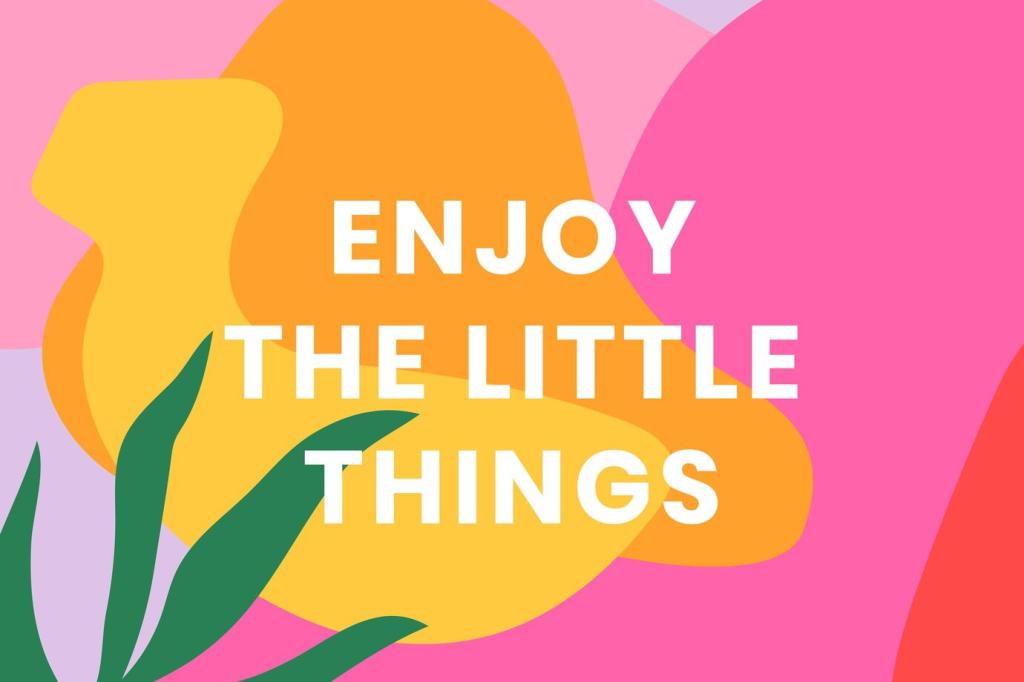
Light as the First Natural Element
Position desks and reading nooks where indirect daylight floods without glare. Use sheer weaves to diffuse brightness, letting your eyes relax. Consider reflective paints to bounce light deeper, creating a consistent glow that fosters focus without demanding constant adjustments or squints.
Light as the First Natural Element
Branches, slatted screens, and woven blinds cast shifting shadows that quietly mark the hours. These soft patterns become a contemplative clock, replacing the anxious tick of notifications with subtle movement that invites you to pause, breathe, and gently recalibrate your pace.
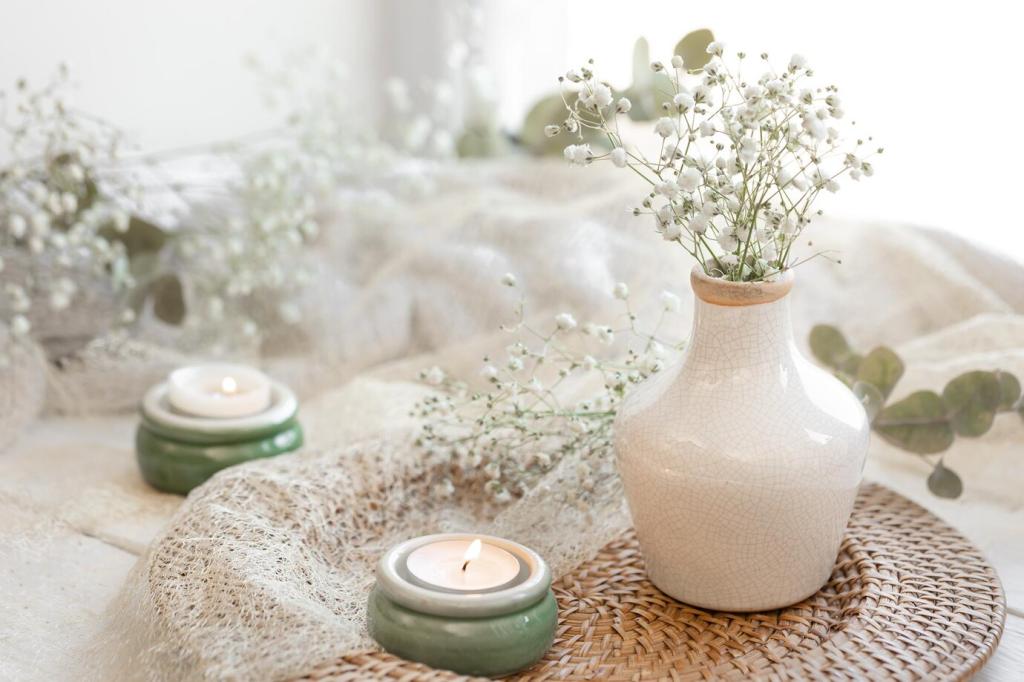
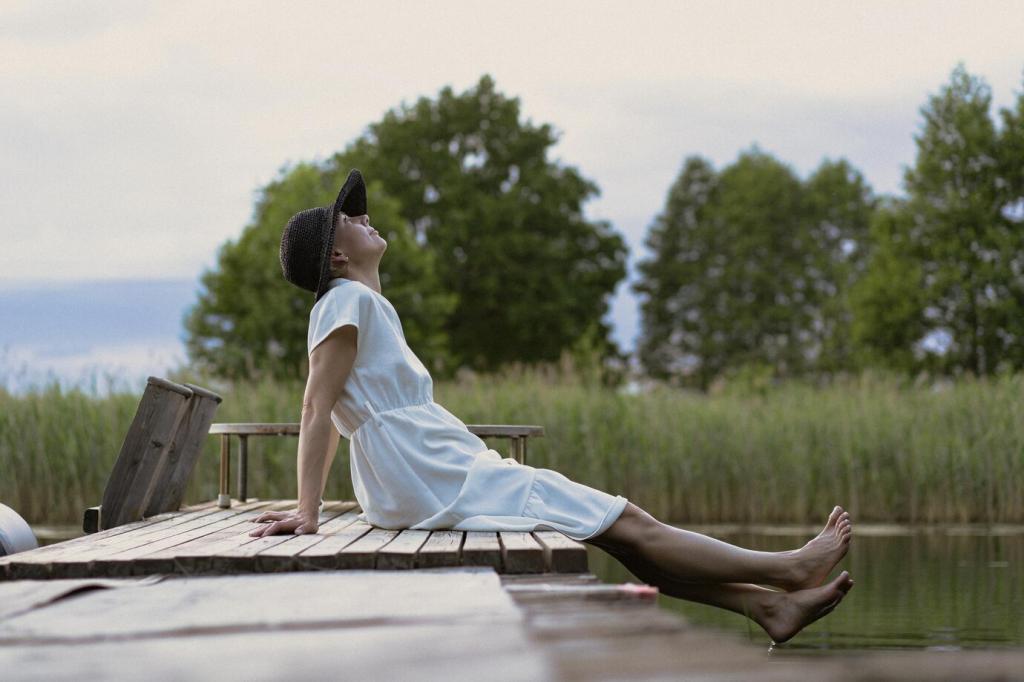
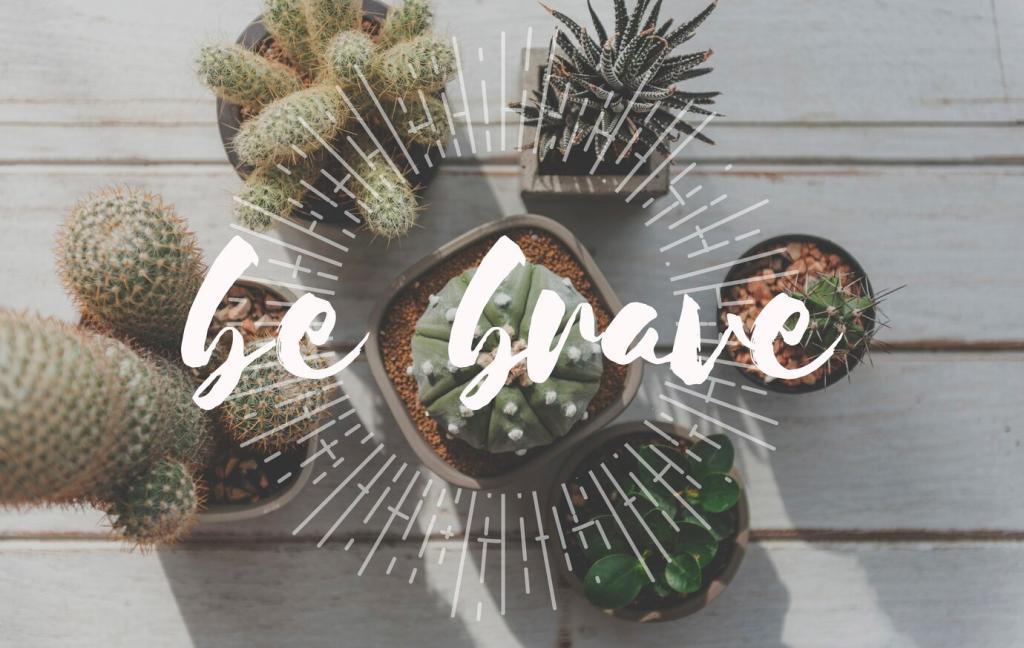
The warmth of wood grains
A hand on an oiled oak shelf tells a quiet story—temperature, grain, age. Wood softens acoustics, invites touch, and communicates care. In mindful design, we celebrate imperfections that read as human, turning every reach or rest into a small grounding ritual.
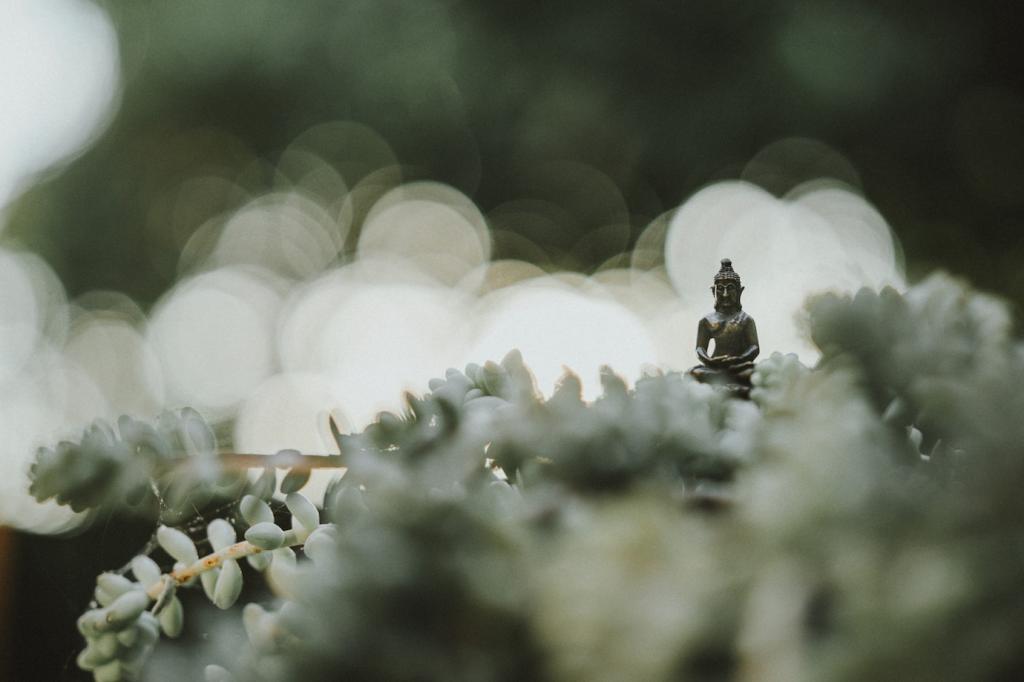
Stone and the feeling of steadiness
Slate, limestone, and river pebbles add cool weight and permanence. A stone tray for keys, a pebble bowl by the door, or a slate backsplash can center attention. Those small, stable moments remind the body there is time, space, and permission to proceed slowly.
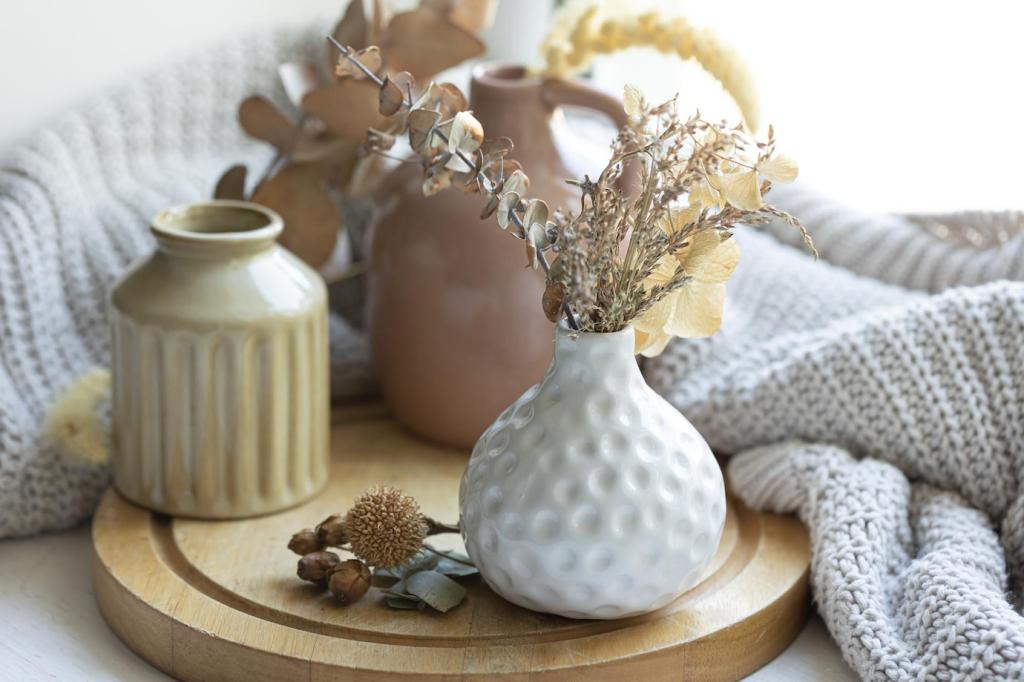
Plants as co-designers
Plants are living collaborators: they scent the air, add texture, and invite tender routine. Choose species that match your light and watering habits, then style them at varied heights. Share a photo of your plant corner, and we’ll recommend subtle layout tweaks for better flow.
Cross-ventilation as moving meditation
Opposing windows or vents create a gentle corridor of air that clears stale thoughts along with stale air. Add gauzy curtains to visualize the breeze. That soft motion becomes a cue to pause, inhale, and exhale with the room’s own natural rhythm.
Thermal variety, choice, and control
Comfort is subjective. Provide light throws, a warming rug underfoot, and a cooler workstation near a window. When your body can choose its microclimate, your mind stops negotiating discomfort and returns to the present task with less irritation and more ease.
Scent cues from the natural world
Subtle scent—cedar in a drawer, a sprig of rosemary near the kettle, or a beeswax candle—can anchor transitions. Keep intensity gentle, seasonal, and intentional. Share your favorite calming scent pairing, and we’ll suggest complementary textures to deepen the sensory experience.
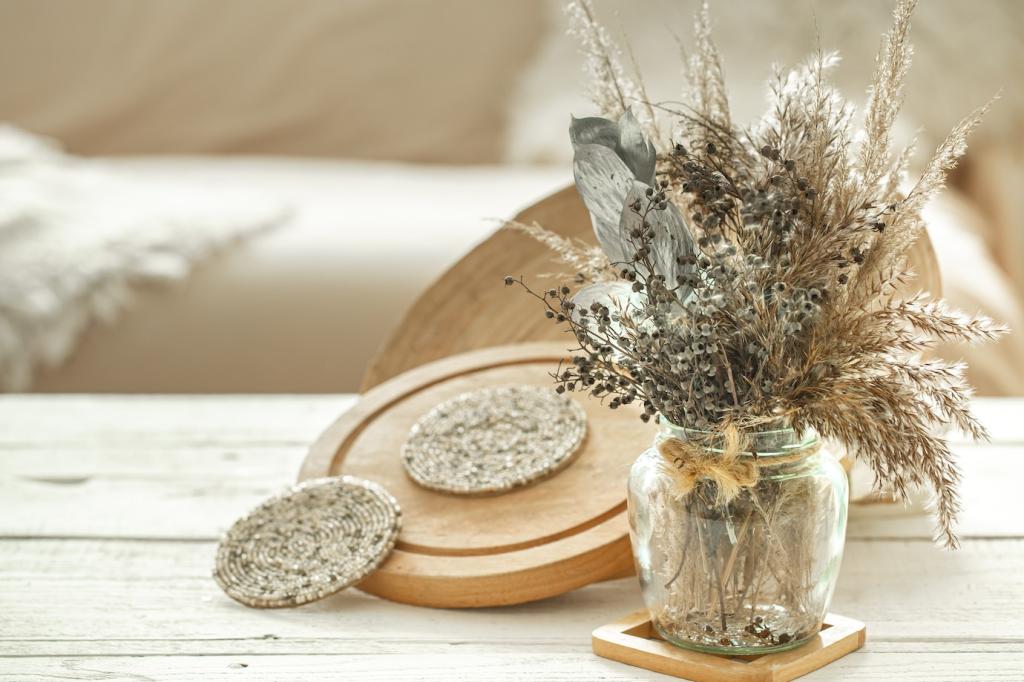
A tiny recirculating fountain, a ceramic basin, or even a bowl with floating leaves introduces gentle, irregular sound. Those non-repeating patterns calm the nervous system, masking harsh noise while adding a tranquil, almost meditative pulse to daily routines.
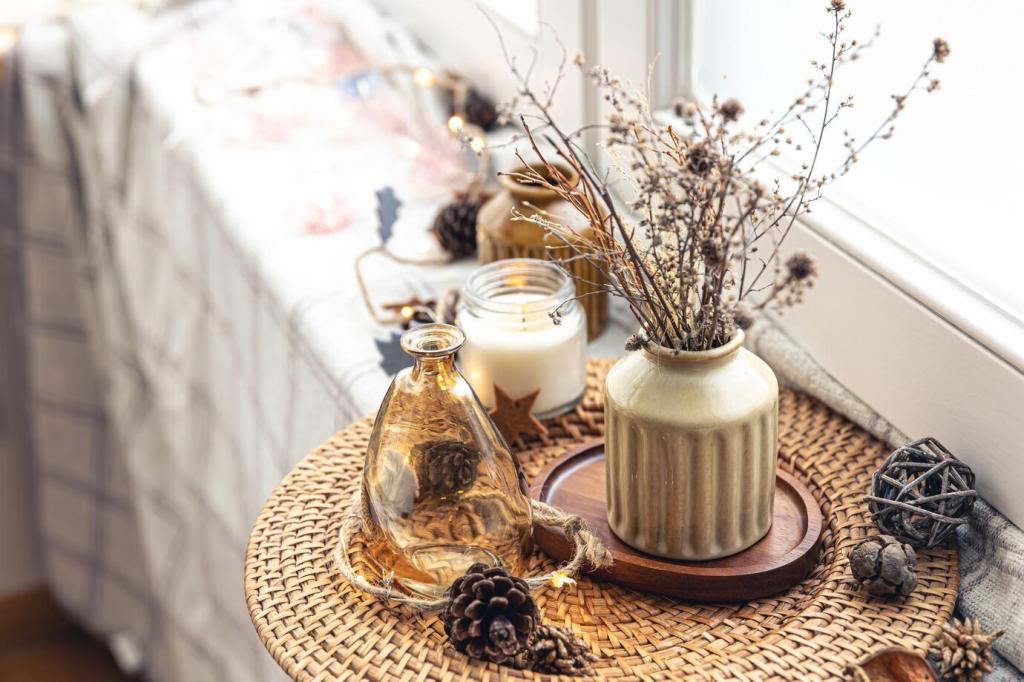
Wool rugs, cork panels, linen drapes, and upholstered benches absorb sharp echoes. Layer these in paths where conversations overlap or devices hum. With fewer spikes of sound, your mind drifts less and your attention anchors more steadily in the present moment.
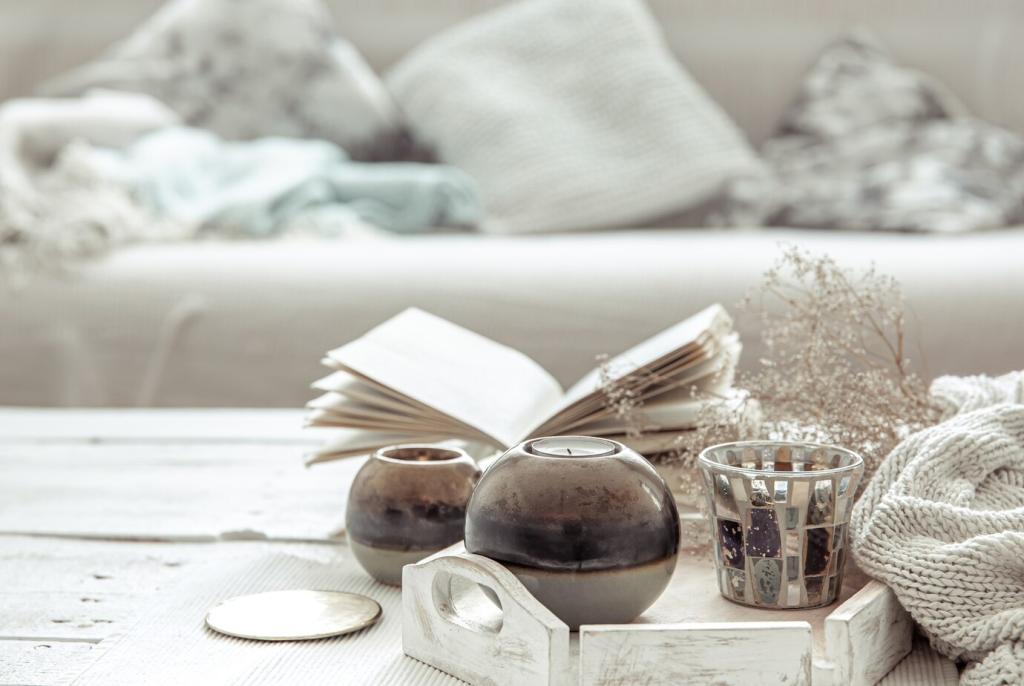
Many people focus better during rain. Simulate that cocoon by pairing soft pink-noise recordings with a window view and dimmer lighting. If this helps you, subscribe for our curated nature-sound library matched to tasks like writing, sketching, or mindful stretching.
Colors and Patterns Borrowed from Landscapes
Earthborn palettes that relax
Think lichen green, river stone gray, and sun-warmed clay. These mid-value hues stabilize mood without dulling energy. Use brighter accents sparingly, like wildflower tones on a tray or cushion, to keep the eye moving gently rather than darting anxiously.
Seasonal edits to stay present
Rotate textiles with the seasons: gauzy linens and light woods for summer, nubby wools and deeper tones for winter. This deliberate shift becomes a mindfulness practice, honoring change and guiding the home’s tempo with nature’s patient cadence.
Fractal-inspired prints with restraint
Choose prints that echo fern fronds, waves, or bark—intricate but soft. Keep scale moderate so patterns invite, not overwhelm. Share a snapshot of your patterns, and we’ll suggest balancing solids or textures that keep your space quietly rhythmic rather than busy.
A Case Story: A Studio Reimagined with Nature Elements
From clutter to calm in one weekend
We began by mapping sunlight and clearing the brightest corner for a floor cushion, plant trio, and small tea tray. Sheer curtains softened midday glare, while a cork panel absorbed echoes. The space felt hushed, ready for breath rather than busyness.
Measuring the mood shift
The resident tracked focus and stress ratings before and after. With plants, a pebble bowl, and a quiet fountain, afternoon slumps shortened, and evening journaling happened naturally. Most telling was the new habit: stepping to the cushion whenever notifications spiked.
Community tips and ongoing tweaks
Readers suggested a branch mobile to trace breezes and a low-warm lamp for nighttime wind-down. We layered both, and the studio’s rhythm settled further. Want the checklist and sources? Subscribe, and share your before–after photos for thoughtful, nature-forward feedback.
